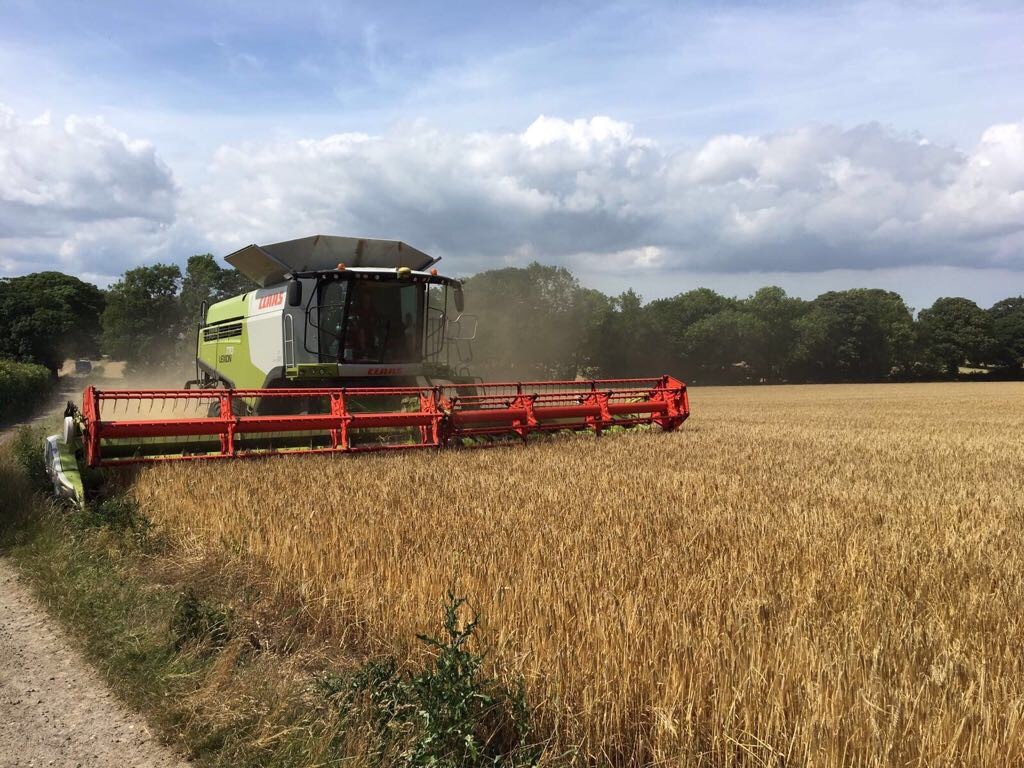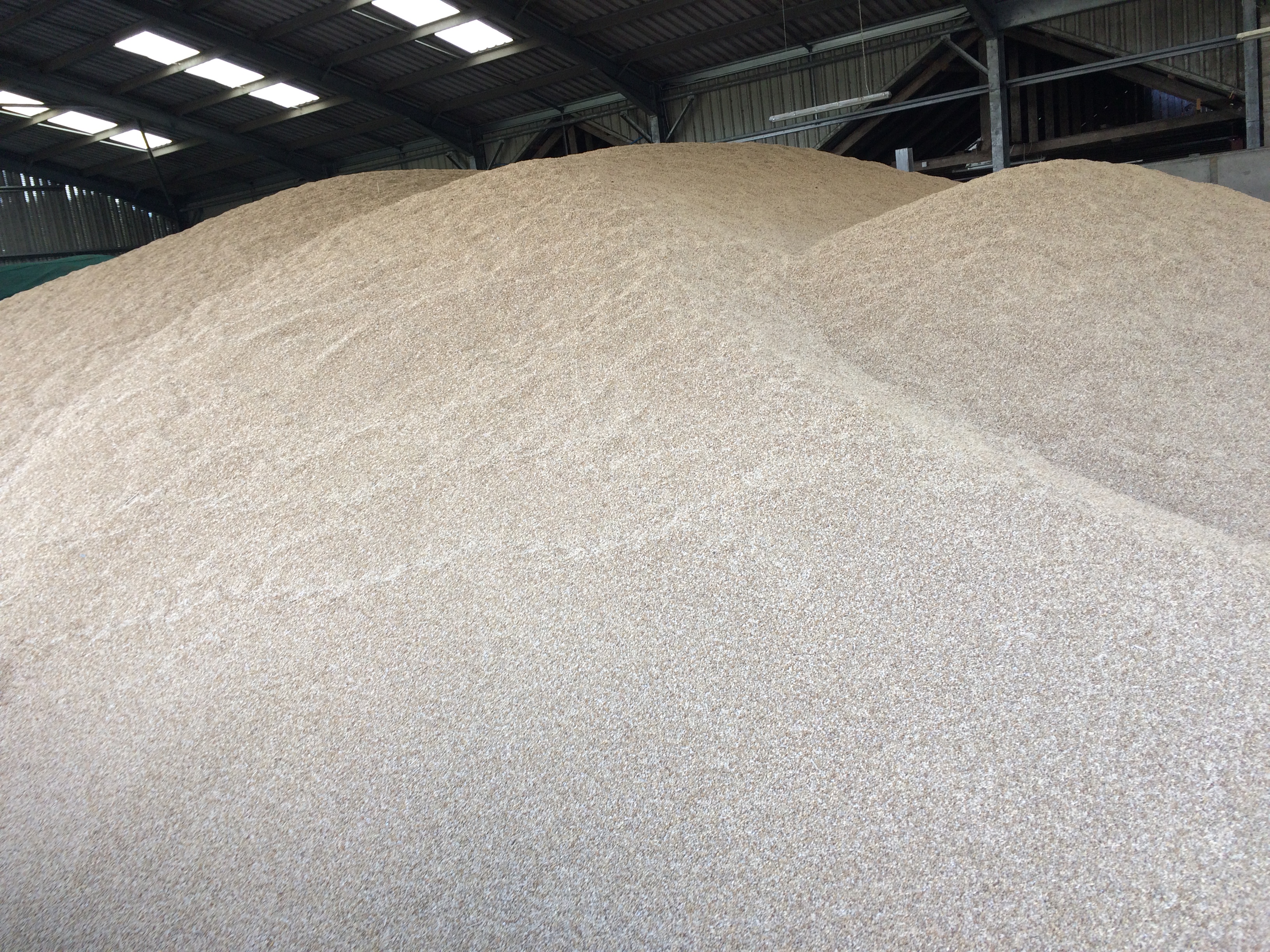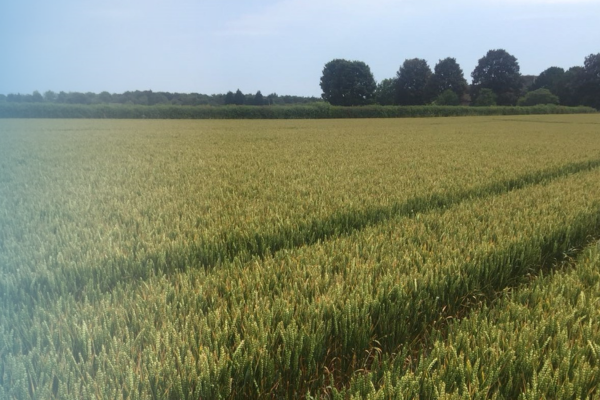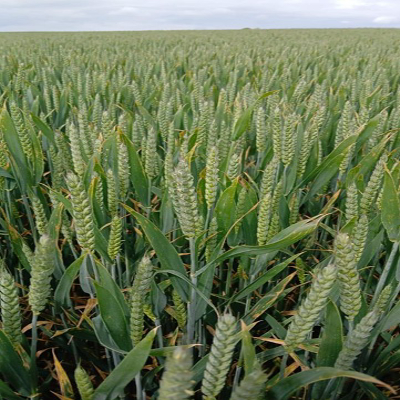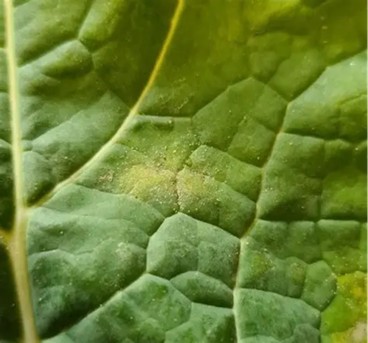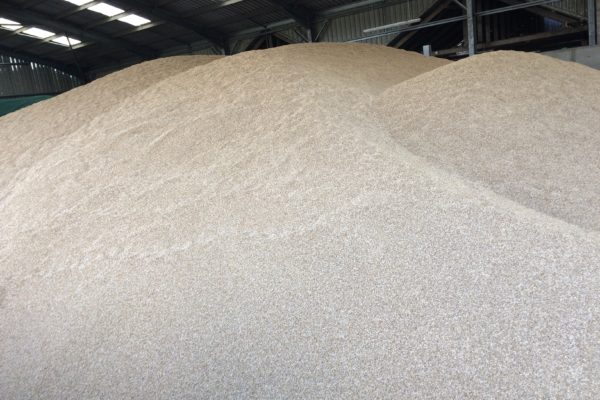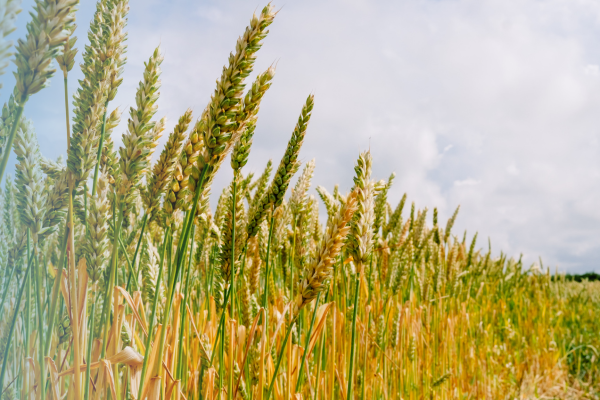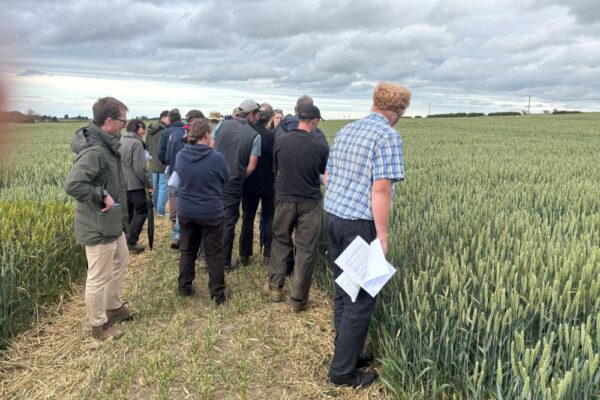Winter Wheat Choices 2025/26
14 July 2025Deciphering all the pro’s and cons varieties currently on the market in the UK. Steve Hoad (Department of Plant and Soil Sciences, SRUC) provides his commentary and top picks for Scotland’s growers.
Yield performance relates to the AHDB North region – which extends from the Scottish and English borders, and the east and north of Scotland. The East region is based on the east of England, whilst the West region includes England, Wales and south-west Scotland.
Top Picks

A candidate soft endosperm variety. It has high yield and has produced very high untreated yields. Its specific weight is below average.
Candidate hard feed wheat. Data cannot be published as variety has not completed its National List testing.
New biscuit-making variety, with a North region recommendation, though it was not added to the Scottish List. Average treated yield, but good untreated yield and good specific weight. No significant disease weakness, but weakish straw strength. Hagberg figures look low.
Candidate bread-making variety with excellent untreated yield. It has a good spectrum of disease resistances and stiff straw.
A high yielding biscuit-making variety with a ‘medium’ rating for distilling use. Excellent treated and untreated yield. Has high specific weight. Good resistance to Septoria, yellow rust and mildew. Top Pick – Biscuit & Distilling
A soft feed variety with a ‘medium’ rating for distilling use. Good treated and untreated yield, with high specific weight. Good disease resistance and stiff straw strength. Hagberg figures are excellent for a soft textured variety. Top Pick – Distilling and Soft Feed
Very high-yielding hard feed variety, though specific weight is very low, and yield underperforms in the North. It has excellent untreated yield and suits a range of rotational positions, soil types and sowing dates. Straw strength is moderate. It has high resistance to mildew and yellow rust, very high resistance to Septoria tritici, and resistance to OWBM.
A hard-milling feed variety with an outstanding specific weight and very high Hagberg figures. It has modest yield and is no longer in trials. It has short stiff straw and good resistance to mildew and yellow rust, but it is susceptible to eyespot. It has a high yield potential in a late sown position. It is relatively late maturing.
This Group 1 variety is rarely grown in Scotland, though in bread-making millers value its consistently good baking performance and bread crumb structure. North region yield is low as is untreated yield. It has a high specific weight. It has short straw and good resistance to mildew, yellow rust and Septoria tritici, but is susceptible to eyespot and very susceptible to brown rust.
A high-yielding hard feed with intermediate specific weight. It has lowish untreated yield. It is relatively early maturing. It is weak for yellow rust and eyespot. It has given high treated yields across a range of rotational positions, soil types and sowing dates. It looks relatively strong in the second cereal position. It has OWBM resistance.
This hard feed variety has a competitive treated yield and very high untreated yield. It produces good Hagbergs. It has performed best in the West region but has also been popular with feed growers in the north of England. It has early maturity with good results as a first cereal and on heavier soils. It has good resistance to mildew, yellow rust and Septoria tritici, but is susceptible to eyespot.
A candidate soft feed variety with high yields across all regions and early maturity. It has intermediate untreated yield and early maturity, though specific weight is low.
A candidate hard feed variety with very high treated yield. However, its untreated yield is poor and it is very late to mature.
A candidate hard feed variety with very high yields across all regions. It has intermediate untreated yield and good specific weight.
Is new very high-yielding bread-making variety in UKFM Group 2 though its North region yield is below its UK average. It has good specific weight, Hagberg figures, early maturity and stiff straw. New – Hard Milling
A high-yielding hard feed variety, with high Hagbergs but a low specific weight and late maturity. It is no longer in trials. It has performed well across a range of rotational positions and on lighter soil. It also suits late sowing. It is medium-tall variety with stiff straw. It has high resistance to yellow rust, with resistance to OWBM, it is susceptible to brown rust.
Very high-yielding hard feed wheat, with excellent Hagberg figures and specific weight. It has performed well in all regions and has high yield potential across a range of rotational positions, soil types and sowing dates. It has excellent untreated yield. Its short straw is fairly stiff. It has with high resistance to mildew, yellow rust and brown rust, and goodish resistance to Septoria tritici. Top Pick – Hard feed
A new bread-making variety in UKFM Group 2 with excellent untreated yield and very early maturity. It has very high Hagberg figures. However, it underperforms in the North region.
A Group 2 milling wheat with good Hagberg and specific weight, and acceptable protein levels. Untreated yield has remains high. An early maturing variety and versatile across a range of soil types, rotational positions and when sown late. Fairly stiff straw with high resistance to Septoria tritici. Cautionary Note: this variety can show weakness to ear sterility on exposed land or fields prone to late spring frosts.
Is a new biscuit-making variety with a ‘medium’ rating for distilling. It is high yielding and has a good specific weight, though its untreated yield is poor. Its intermediate straw strength stiffens with PGRs. New – Biscuit-making & Distilling
A candidate hard feed variety with very high yield and outstanding specific weight. It has intermediate untreated yield, stiff straw and very early maturity.
Candidate bread-making variety with high yield across all regions. It has intermediate specific weight and is early maturing.
Candidate bread-making variety with high yield across all regions. It has very good specific weight.
A candidate hard feed variety but has seriously underperformed in the north region. It has short stiff straw, but weak for untreated yield.
A new bread-making variety in UKFM Group 2. A very high treated yield encouraged its addition to the Scottish List, though grain protein can be yield-diluted. It has excellent Hagberg falling number and good specific weight. New – Hard milling
Group 2 hard milling variety. It has a modest North region yield, but very good untreated yield. It has high Hagberg figure and potential for good protein levels. It is early maturing and suits different rotational positions. Short and stiff straw. Good resistance to yellow rust, mildew and Septoria tritici. Its flour quality is relatively good, but baking performance varies more than a Group 1. Top Pick – Hard milling
Is a new hard feed variety with very high yield and good specific weight. Its yield holds up well in the North region. It has stiff straw and average maturity. New – Hard milling
A new biscuit-making variety with a ‘good’ rating for distilling. It has high yield and good untreated yield. It is early maturing. Note that high levels of yellow rust have been observed in RL trials.
A Group 2 bread-making variety with good North region yield and very good untreated yield. It has excellent specific weight and good Hagberg. Straw strength looks very good. Top Pick – Hard milling
A new bread-making recommendation in UKFM Group 1. It has a competitive yield and above-average untreated yield.
A soft feed variety recommended for the North region. It is rated ‘medium’ for distilling. It has high treated yield, with intermediate untreated yield. Specific weight and Hagberg figures are below average. It responds well to plant growth regulators. Resistance to yellow rust and Fusarium is good. Top Pick – Distilling & Soft Feed
Group 1 bread-making variety. Good protein levels but needs careful N management to achieve bread making specification. It has high Hagberg figures and specific weight. North region yield is modest and untreated yield is very poor – with severe weakness to yellow rust. It is versatile in rotational position and sowing date and has stiff straw and early maturity. It suits heavier textured soils and is good in the second wheat position. Quality tests indicate good processing and baking performance.
Group 3 variety rated ‘medium’ for distilling, though it is no longer on the Scottish List. It meets biscuit-making criteria, though gluten quality may vary. It has stiff straw and has yielded best in the East region and on heavier soils. It suits early sowing. It performs less well in the North, but untreated yield is relatively good. It has high resistance to yellow rust, brown rust and Septoria tritici, and is resistant to OBWM and susceptible to mildew.
A hard feed variety with excellent treated yield and intermediate untreated yield coupled with very good specific weight and decent Hagberg figures. It has very stiff straw and maturity similar to other soft wheats. Top Pick – Hard Feed
A candidate hard feed variety with very yield potential including good results in North region trials. It has good untreated yield and high specific weight.
A candidate hard feed variety with very yield potential though has underperformed slightly in the North region. It has good untreated yield and intermediate specific weight.
A candidate biscuit-making variety. It has underperformed in the north region and is very late maturing.
A soft feed recommendation for the East and West Regions, though it is rated ‘medium’ for distilling. It has high treated yield and above average untreated yield. Specific weight and Hagbergs are very low. Maturity is similar to other soft Group 4s. It has very weak straw.
A new bread-making variety in UKFM Group 2. Unusual for a milling quality variety it yields relatively well in the North region and has been added to the Scottish List. An above-average yield can dilute its grain protein. It has an excellent specific weight. New – Hard Milling
Is now outclassed for yield but has been valued as an early maturing soft-textured variety with a ‘medium’ rating for distilling. Has produced good yields across a range of soil types, sowing dates and rotational positions. It performs well as second cereal. It is medium-tall straw with only moderate strength. Its resistance to yellow rust has broken down and is susceptible to Septoria tritici and eyespot, though fairly resistant against mildew, and has OWBM tolerance.
Hard feed wheat, with a good yield and relatively high untreated yield. It has high yield potential in a second cereal position and may suit early sowing and lighter soils. It is relatively late maturing. It has shown no major weaknesses to disease and has good resistance to mildew, yellow rust and Septoria tritici, with resistance to OWBM. Top Pick – Hard Feed
Group 2 bread-making variety, with very good Hagberg figures, specific weight and protein specification for milling. North region yield is modest, but untreated yield is very good, reflecting good all-round disease resistance; including excellent resistance to Septoria tritici. Its moderate straw strength responds well to PGRs. In processing, it has good flour water absorption, though baking performance can be variable.
A recommendation for the East and West regions. A very good UK yield but underperforms in Scotland. It has intermediate untreated yield. Its specific weight is low and maturity is average.
Soft feed variety rated ‘good’ for distilling. It is high yielding, with intermediate untreated yield. On balance of features, it is now considered as becoming outclassed. Specific weight is low. It has performed well across a range of rotational positions and soil types. It is moderate as a second wheat and suits late sowing. Straw strength is moderate but stiffens with PGR. It has good resistance to yellow rust and is resistant to OWBM. Resistance to Septoria tritici has waned.
A candidate hard feed variety which is believed to be resistant to BYDV. It has intermediate yield, but low specific weight.
A new bread-making in UKFM Group 2 with both BYDV and OWBM resistance – it could develop a special-use variety. Though it has a significant yield penalty, with very weak straw and very late maturity. It has not been added to the Scottish List.
A new soft feed variety rated ‘medium’ rating for distilling. It is very high yielding, but untreated yield loss can be high. It has yield very well as a second cereal and has good straw strength. It is intermediate for specific weight and Hagberg figures. New – Distilling & Soft Feed
A UKFM Group 1 bread making variety with high Hagbergs and potential for good protein. It has good specific weight and yield is about average for a Group 1 milling wheat. It has very stiff straw and no major disease weaknesses. On quality, it has good breadmaking potential at range of protein levels.
A hard feed variety with a specific recommendation for resistance to barley yellow dwarf virus (BYDV). It has modest yield and a low specific weight. It has a very poor untreated yield and is relatively late maturing. It has high resistance to brown rust, but it is susceptible to yellow rust.
An established bread-making variety but has very limited use in Scotland. It has been popular as a feed variety in the north of England. Untreated yield is very poor due to its extremely poor resistance to yellow rust and mediocre resistance to Septoria tritici. An awned wheat with short, stiff straw. It’s the only Group 1 variety with resistance to OWBM. It has high Hagberg and specific weight and is favoured by bread-makers because of its good milling and baking qualities.
A candidate feed variety, but data cannot be published as it has not completed its National List testing.
Is a bread-making variety in UKFM Group 1. It has average treated and untreated yield, with excellent specific weight. Apart from eyespot, disease resistance is good, and straw strength average.
Very high yielding hard Group 4 variety but has a poor untreated yield. It has high Hagbergs and specific weight and has performed well across a range of soil types, rotational positions and in a late sowing situation. Its moderate straw stiffness responds well to PGRs. It has intermediate resistance to Septoria tritici and fusarium ear blight, and resistance to OWBM. It is very susceptible to yellow rusts and intermediate resistance to mildew and Septoria. Top Pick – Hard feed
Candidate soft feed variety. Limited data suggests that it slightly underperforms North region, though it has very stiff straw.
Sign up to the FAS newsletter
Receive updates on news, events and publications from Scotland’s Farm Advisory Service

